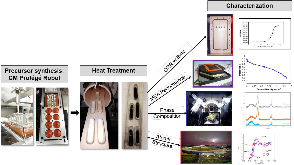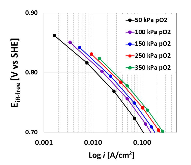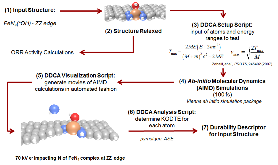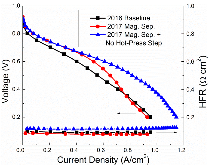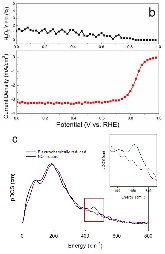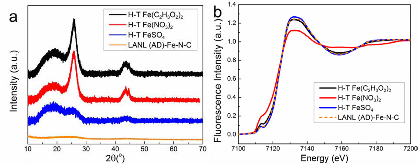ElectroCat: DOE's approach to PGM-free catalyst and electrode R&D
- Dept. of Energy (DOE), Washington DC (United States). Fuel Cell Technologies Office (FCTO)
- Los Alamos National Lab. (LANL), Los Alamos, NM (United States)
- Argonne National Lab. (ANL), Argonne, IL (United States). Chemical Sciences and Engineering Division
- Oak Ridge National Lab. (ORNL), Oak Ridge, TN (United States). Center for Nanophase Materials Science (CNMS)
- National Renewable Energy Lab. (NREL), Golden, CO (United States). Chemistry and Nanoscience Center
The successful development of high-performance, durable platinum group metal-free (PGM-free) electrocatalysts and electrodes for polymer electrolyte membrane fuel cells (PEMFCs) will ultimately improve the cost-competiveness of fuel cells in a wide range of applications. This is considered to be a critical development especially for automotive fuel cell applications in order to bring the system cost of an automotive fuel cell system down to the $30/kW cost target set by the U.S. Department of Energy (DOE). The platinum group metal (PGM) electrocatalysts are a major contributor to the system cost. Addressing the technical challenges to PGM-free electrocatalyst and electrode development, therefore, represents one of DOE's most pressing research and development (R&D) priorities. ElectroCat was formed by the DOE as part of the Energy Materials Network (EMN) in early 2016, and shares with other EMN consortia the goal of decreasing the time to market for advanced materials related to clean energy technologies, in the context of increasing U.S. fuel cell electric vehicle (FCEV) manufacturing competitiveness. To accomplish this, the consortium performs core research and development and provides universities and companies streamlined access to the unique, world-class set of tools and expertise relevant to early-stage applied PGM-free catalyst R&D of the member national laboratories. Moreover, ElectroCat fosters a systematic methodology by which prospective catalysts and electrodes are prepared and analyzed rapidly and comprehensively using high-throughput, combinatorial methods. Catalyst discovery is augmented by theory as well as foundational electrocatalysis and materials knowledge at the participating national laboratories. Furthermore, ElectroCat has developed a data sharing framework, requisite of all EMN consortia, for disseminating its findings to the public via a searchable database, to further expedite incorporation of PGM-free electrocatalysts into next-generation fuel cells by advancing the general understanding of the PGM-free electrocatalyst field.
- Research Organization:
- National Renewable Energy Laboratory (NREL), Golden, CO (United States); Oak Ridge National Laboratory (ORNL), Oak Ridge, TN (United States); Argonne National Laboratory (ANL), Argonne, IL (United States)
- Sponsoring Organization:
- USDOE Office of Energy Efficiency and Renewable Energy (EERE), Fuel Cell Technologies Program (EE-3F); USDOE Office of Science (SC), Basic Energy Sciences (BES) (SC-22). Scientific User Facilities Division
- Grant/Contract Number:
- AC36-08GO28308; AC05-00OR22725; AC02-06CH11357
- OSTI ID:
- 1424904
- Alternate ID(s):
- OSTI ID: 1548720
OSTI ID: 1460171
OSTI ID: 1461451
- Report Number(s):
- NREL/JA--5900-71058
- Journal Information:
- Solid State Ionics, Journal Name: Solid State Ionics Journal Issue: C Vol. 319; ISSN 0167-2738
- Publisher:
- ElsevierCopyright Statement
- Country of Publication:
- United States
- Language:
- English
Similar Records
Mesoporous Carbon-Based PGM-Free Catalyst Cathodes

